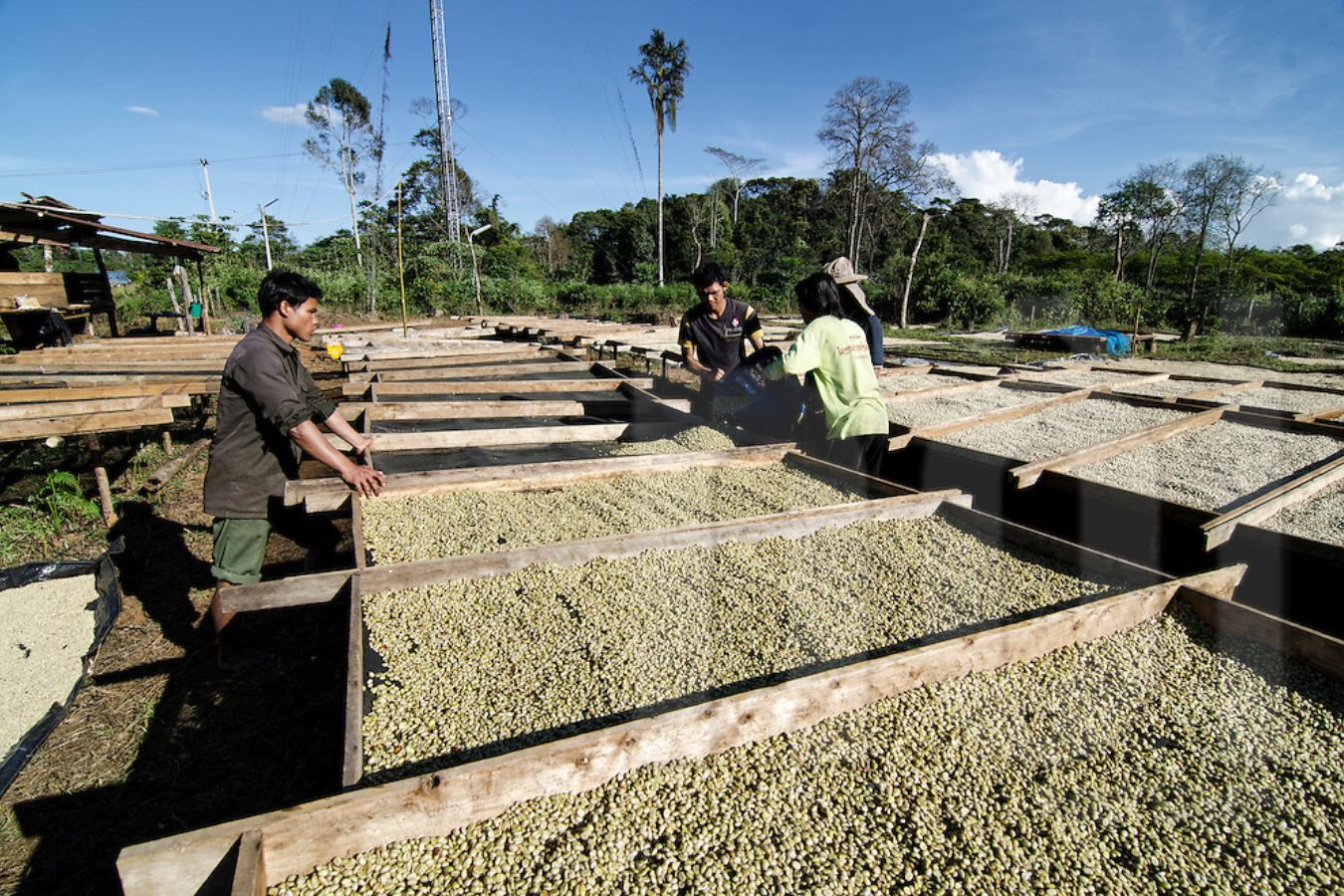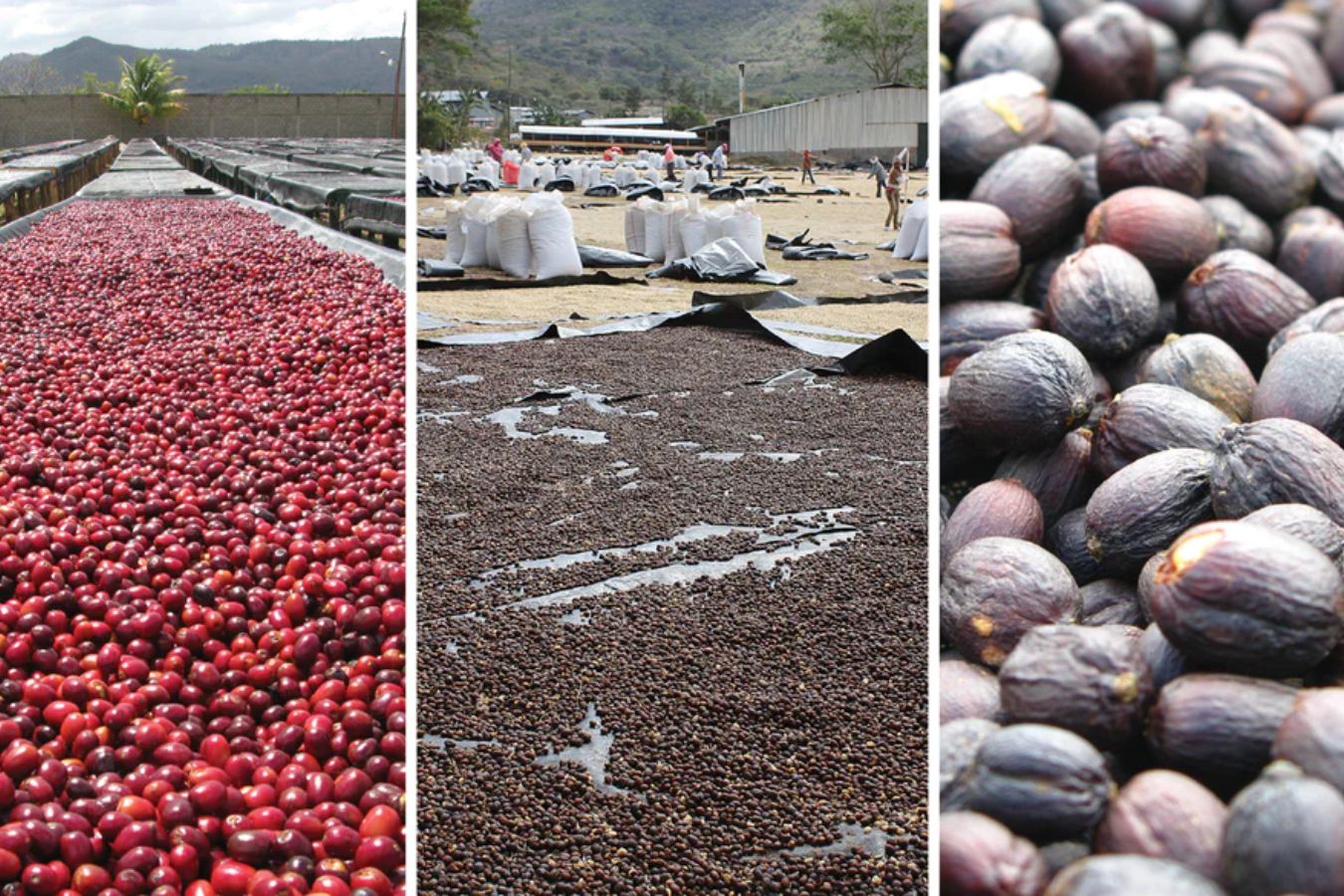
What exactly is Arabica coffee?
Arabica coffee (whether a bean, brewed in a cup or a plant) is coffee derived from the plant species Coffea arabica. Coffea arabica is one of the two primary coffee plant species grown on our planet, the other being Coffea canephora, also known as “Robusta” coffee.

Currently, Arabica species account for approximately 60% of global coffee production. While Arabica used to dominate production, it has been losing ground (literally and metaphorically) in recent decades to the easier-to-produce Robusta.
Where did Arabica coffee come from, and where is it grown today?
Arabica coffee’s origins can be traced back to Ethiopia, which is widely regarded as the birthplace of coffee and where it still grows wild. It is thought to have traveled from Ethiopia to Yemen, where it was first cultivated for farming. Arabica coffee is now grown in coffee-suitable regions all over the world, typically in tropical regions and at high elevations, ranging from Africa to Latin America, Indonesia, and Brazil.
Conditions must be favorable for growing high-quality Arabica coffee, and some coffee-producing countries, most notably Vietnam, do not grow Arabica at all.
What makes Arabica coffee so special, and why is it used as a selling point?
You’ve probably seen “100% Arabica” on coffee packages before, and you’d be hard-pressed to find coffee other than Arabica in specialty coffee. The species is widely regarded as superior to its counterpart Robusta in flavor complexity, sweetness, balance, and acidity—especially when compared side by side. Arabica coffee is also more difficult to grow and cultivate than other types of coffee, so the beans are regarded as, and priced as, a premium commodity.
What are some Arabica coffee varieties?
Arabica coffee is available in a variety of subspecies, including Bourbon, Pacarmara, Maragogype, SL-28, Typica, Ethiopian Landrace varieties (sometimes referred to as “Heirloom”), and others.
Is Arabica ever mixed with anything else?
Arabica-Robusta blends are still common in the specialty world, especially for espresso, where Arabica beans are chosen for flavor and Robusta beans are added to increase caffeine, intensity, and crema.
At the genetic level, some of today’s hybrid Arabica coffee varieties, such as Catimor and Sarchimor, incorporate genetic material from Robusta coffees, allowing the plants to be more disease-resistant, at least for a time. With coffee leaf rust and other environmental concerns threatening the future of coffee production, it will be critical to continue research into hybrids like these to ensure coffee production can survive.
Coffee classification and preliminary processing
1. Cleaning and classification:
First, contaminants such as branches, leaves, soil, rocks, and other foreign materials are removed from the mature fruit block, followed by the removal of dried, green, and young fruits (can use a washing machine to classify fresh industrial fruits). One ton of fruit per hour capacity).
2. Peel the fruit:
Using a disc or drum-type fruit grinder (with a yield of 0.3-1 tons of fruit per hour), peel the fruit without injuring it by cracking it and peeling off the husk.
3. Soak brewing:
Depending on the volume of coffee, pour it into a cement tank, basket, or plastic pot, then cover it with a sack to ferment. Metal utensils should not be used to store coffee. Soaking causes the mucilage layer around the coffee beans to ferment, making it easier to wash and convenient for drying.

The fermenting process improves the quality of coffee and tea and gives them a distinct flavour. Overfermenting, on the other hand, has the opposite consequence. It’s recommended to keep it between 36 and 40°C, which is the fermentation temperature of the grain mass.
It is required to flip the grain mass 2-3 times during fermentation. The temperature of the surroundings has an impact on the fermentation process. Fermentation takes 12 to 36 hours.
People can scratch the shell enclosing the kernel with their nails or scoop a handful of brewed coffee and rub it in their hand; if the roughness in the groove between the slits of the beans is no longer dense, the fermentation process has already begun.
4. Oil wash:
Thoroughly rinse the fermenting coffee with clean water. Oil cleaners with a small capacity can be utilized.
5. Drying: Coffee drying is a post-harvest process
Wet paddy coffee is carried to a drying yard or a small drier after being washed and drained. Drying is a crucial phase in the coffee and tea production process. The drying or drying process significantly impacts the quality of coffee.
People who are drying are kept away from the ground and dry on a sheet, nia, or cocoons. The coffee coating should be as thin as possible. Rake and swirl the coffee as it dries to ensure equal drying. Wet rice coffee can also be dried in a brick or cement yard. When it rains or dews at night, you must cover, cover, and cover to avoid soggy coffee. Coffee should never be let to dry on the ground.
If drying, indirect drying equipment with an oven heated by coal, gas, or oil is required. Coffee should not be dried with hot air from charcoal, wood, or oil-burning furnace since the flavor will be affected. When employing a rotary drum dryer, the most excellent quality of dried coffee is achieved.
It should be noted that the use of drying equipment must adhere to the proper drying process for coffee drying materials.
When the moisture content in the beans is less than 13%, drying or drying coffee meets the standards. When there are no testing circumstances, the time to cease drying can be determined by biting a few seeds; if it is difficult to bite, the beans are not cracked, and the coffee can be stored.
Keeping coffee fresh – High quality
The quality of the coffee will not deteriorate if it is stored properly. Dry coffee beans can be stored in bags raised high above the floor to create ventilation.

Many phases of the household wet technique of coffee processing can be done manually, but machines must do the peeling process.
THE ARABICA “100% ARABICA” LABEL
There is no robusta coffee in coffee labeled as 100 percent arabica. According to Hanna, this label is used by brands to indicate that their coffee is of high quality. “When arabica dominated world markets before the middle of the twentieth century, there was no need to market arabica in this way,” she explains. However, as robusta became more popular, there was a push to distinguish arabica as being of higher quality.”
Previously, some roasters would add robusta to blends to increase volume, lower costs, and increase profits. This meant that roasters who didn’t use robusta in their blends had to differentiate themselves and market their coffee as being of higher quality.
On the other hand, a 100% arabica label on your coffee should not be interpreted as a sign of quality. Hanna claims that the label is simply a “statement of fact about the contents of the bag.” It simply means that no robusta is present.
“There is nothing inherent in the [100% arabica] claim that implies the contents will necessarily be of higher quality or taste in any way.”
She adds that your definition of what constitutes a quality cup of coffee and your expectations when drinking it should be considered. “Perhaps you’re looking for a very specific coffee that produces a specific flavor or contributes crema to your espresso blend.” A robusta might be a better choice for this than an arabica. Is one superior to the other? Perhaps not, if you define ‘better’ as “suitable for its purpose.”
Look for a cupping score if you want a better indication of a coffee’s quality. Coffees with a score of 80 or higher are classified as specialty coffee, whereas commodity coffee (used in supermarket blends and instant) has a score between 65 and 80.
A coffee’s quality is influenced by a variety of factors, including its origin, processing method, elevation at which it was grown, and so on. Rather than claiming that coffee is “100% arabica,” most modern specialty coffee labels will provide information about the coffee’s history. This information not only gives consumers more information about their coffee but also often reassures them that the coffee is traceable and ethically produced. “The phrase ‘100% arabica’ is just extremely basic in terms of information for a specialty coffee consumer,” Gonzalo says.
“Today’s specialty coffee packaging includes full traceability information such as ‘[the] name of the farm, GPS location, name of the owner, specific botanical variety, crop year, and so on.”